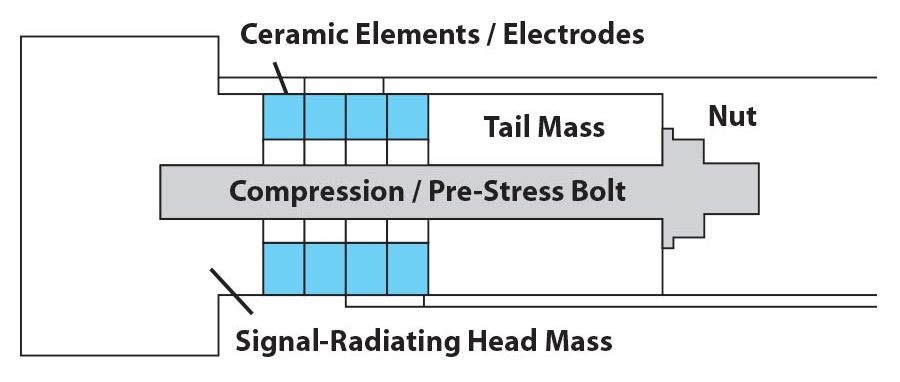Single-element ceramic transducers are often the most cost-effective option for signal generation and sensing applications, while multiple ceramic element transducers are best-suited for high power or large displacement applications.
In general terms, transduction refers to the conversion of energy from one form to another. In terms of ceramic transducers, it means the conversion of electrical to mechanical energy and/or vice-versa. This is made possible by the inclusion of active piezoceramic components in the transducer, and can take place in a variety of mediums (e.g., air, liquid, etc.) using a variety of transducer designs.
The piezo transducer’s ability to convert mechanical energy to electrical energy (and vice-versa) makes the generation and detection of sound waves possible. Transducers that generate audible-range sound waves can be used as speakers, buzzers, alarms, etc., while transducers that generate ultrasonic-range sound waves (above 20 KHz) can be used to measure distance in various mediums, determine flow rates in fluids, monitor fluid levels in vessels, atomize liquids, perform medical imaging, weld plastics or metals, monitor structural health, etc.
To simplify our discussion, we will break transducer design down into two main categories: single ceramic element transducers and multiple ceramic element (pre-stressed stack) transducers. Single-element transducers are often the most cost-effective option for signal generation and sensing applications, while multiple ceramic element transducers are best-suited for high power or large displacement applications. Both single- and multiple-element transducers rely on the ceramic component as the active element(s) for transduction.
For entire article, visit Ceramic Industry

